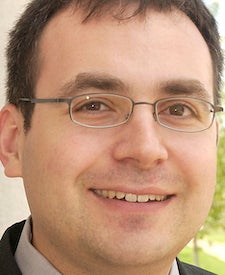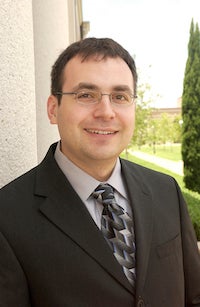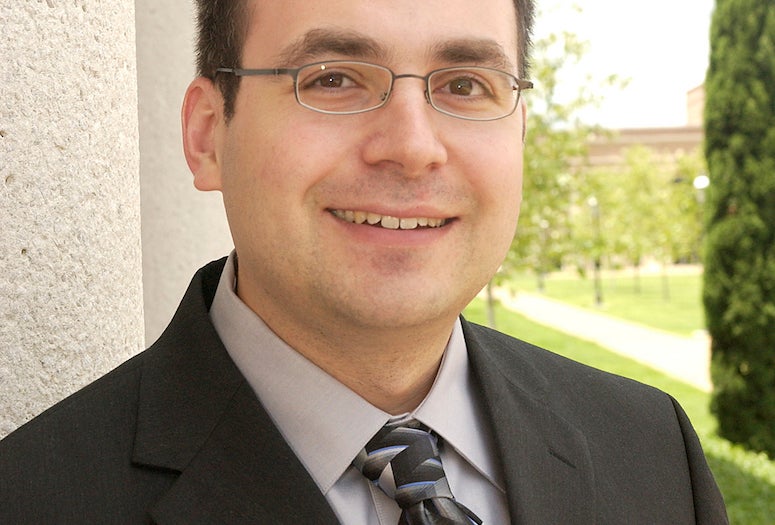Risk-limiting audits (RLAs) that effectively verify the results of an election are underutilized in the United States, according to a new study by a professor and an alumnus of Rice University’s George R. Brown School of Engineering who specialize in voting technology.
Dan Wallach and Matthew Bernhard show in a tech brief in the Association for Computing Machinery Technology Policy Council’s Tech Briefs that there are viable options to confirm election results, with varying degrees of complexity and accuracy. Some are already in use in the U.S., but they are not widespread.

The study, “Election Security: Risk-Limiting Audits,” concludes such audits are powerful and efficient methods to assure election accuracy, and also help mitigate the risk of software bugs, procedural mistakes and security flaws in electronic voting systems.
“Improving election integrity doesn’t need to be a partisan argument,” said Wallach, a professor of computer science and of electrical and computer engineering, who will answer questions from the public in a Reddit “Ask Me Anything” session at noon Central time on Tuesday, Oct. 25.
“With straightforward tools like risk-limiting audits, election officials can increase public assurance that election outcomes are correct, even in the face of hypothetical corruption or tampering with computerized tabulation systems,” he said.
Key to any audit’s success is the availability of paper ballots to confirm the machine counts, according to the study.
“Computerized ballot scanners, while providing enormous benefits to the speed of tallying ballots, are vulnerable to misconfiguration and hacking,” said Bernhard, who studied with Wallach as a Rice undergraduate, then earned his Ph.D. at the University of Michigan studying voting security. He now a research engineer at the nonprofit VotingWorks.
“Counting millions of complex ballots by hand is impractical, however,” he said. “RLAs give us the best of both worlds: a high degree of accuracy and transparency without the enormous undertaking that is counting every contest on every ballot by hand.”
The researchers suggest one of three RLA levels would fit most situations.
· Ballot comparison audits are the “most efficient and precise, requiring an order of magnitude less work than the other methods on average,” they wrote. This method requires paper ballots to be individually numbered by the ballot scanner, allowing auditors to look up the corresponding electronic record.
· Ballot polling audits take a random sample of ballots and compares them to the electronic totals. That doesn’t require unique numbering, simplifying the process, but it tends to be less precise.
· Batch comparison audits that compare groups of ballots, such as those from a specific polling place, are precise but, they wrote, “not as fine-grained as ballot-level audits” and would require handling many more ballots.
- Peer-reviewed research
-
Election security: Risk-limiting audits: https://dl.acm.org/doi/pdf/10.1145/3568005
- Image for download
-

https://news-network.rice.edu/news/files/2022/10/1024_WALLACH-1-WEB.jpg
CAPTION: Dan Wallach. (Credit: Jeff Fitlow/Rice University)
- Related materials
-
Dan Wallach website: https://www.cs.rice.edu/~dwallach/
Matt Bernhard bio: https://mbernhard.com
Department of Computer Science: https://csweb.rice.edu
Department of Electrical and Computer Engineering: https://eceweb.rice.edu
George R. Brown School of Engineering: https://engineering.rice.edu
- About Rice
-
Located on a 300-acre forested campus in Houston, Rice University is consistently ranked among the nation’s top 20 universities by U.S. News & World Report. Rice has highly respected schools of Architecture, Business, Continuing Studies, Engineering, Humanities, Music, Natural Sciences and Social Sciences and is home to the Baker Institute for Public Policy. With 4,240 undergraduates and 3,972 graduate students, Rice’s undergraduate student-to-faculty ratio is just under 6-to-1. Its residential college system builds close-knit communities and lifelong friendships, just one reason why Rice is ranked No. 1 for lots of race/class interaction and No. 1 for quality of life by the Princeton Review. Rice is also rated as a best value among private universities by Kiplinger’s Personal Finance.

